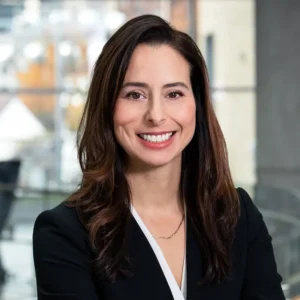TikTok: What’s Next for Influencers?
TikTok could be banned by June 19, 2025 in the United States. What would this mean for influencers?
From the moment a startup idea is born, the road of the entrepreneur is not an easy one. Recent faculty research in the Tepper School of Business at Carnegie Mellon University examines fresh data that shows how founders respond to the challenges and opportunities they encounter along the way.
Matthew Denes, assistant professor of finance, looks at the gig economy’s strengths as a testing ground for new entrepreneurs. Brandy Aven, associate professor of organizational theory, strategy, and entrepreneurship, dispels the myth of the lone entrepreneur. And D. Carrington Motley, assistant professor of entrepreneurship, explains how founders manage change and learn from failure.
The gig economy has been criticized for suboptimal working conditions, from weak labor protections to job insecurity. But a recent study by Matthew Denes and co-authors Spyridon Lagaras, the University of Illinois at Urbana-Champaign, and Margarita Tsoutsoura, Washington University in St. Louis, provides evidence that gig work offers a steady and flexible launch pad for first-time entrepreneurs, especially the young and capital-constrained.

“There’s this ongoing debate about the gig economy. What we find here is that it opens up pathways to entrepreneurship, especially for people who haven’t been able to pursue that before,” Denes explained.
To trace the transition from gig worker to entrepreneur, the study mined U.S. tax data for more than 100 million people in the labor market ages 25 to 65 from 2012, when the gig economy started to take hold, to 2021. Nearly 10 million gig workers filed a Schedule C form to report income from businesses of their own during the period. The study found that participants in the gig economy are much more likely to start a business than non-gig workers: 1.7% compared to 0.7%.
While they found that companies started by gig workers are more likely to fail, those that do succeed are more profitable than new starts founded at the same time by non-gig workers. Former gig workers also are more likely to start additional firms.
Denes found that gig entrepreneurs typically have at least one of three characteristics: lower income, young, and have dependents.
The study showed lower-income individuals are substantially more likely to start firms if they work in the gig economy. Young people also are generally more likely to be gig workers, and thus more of them use gig work to step into business ownership. And people who have dependents and could benefit from a flexible schedule are much more likely to start a business this way.
“Our findings speak to new ways for people to become entrepreneurs,” Denes said. “There’s a really stark trend of more and more gig workers starting firms, and the landscape for entrepreneurial activity looks really exciting. These can be the next large new firms, like the Googles and Ubers of the economy in the future.”
Much like the gig entrepreneurs in the study, MBA students in a course Denes teaches, Venture Capital and the Finance of Innovation, share the sense of possibility inherent in startups. Whether a venture is started by a gig worker or a VC, he tells them, the risk of failing is high. But with a university wide system to encourage startups housed in the Swartz Center for Entrepreneurship, students of all disciplines can increase their odds.
“In collaboration with the Swartz Center, there are lots of opportunities for students to engage with industry participants, to learn at the Tepper School of Business before they go out into the real world, either in a first job or straight off as an entrepreneur,” Denes said. “It’s awakening to the realities of being an entrepreneur. It’s helpful for them to see how things work.”
The myth of the self-made entrepreneur permeates modern business culture, but rarely do entrepreneurs act alone, Brandy Aven explained. As a social network scholar, Aven studies and teaches how people access information using networks, and she is interested in how networks determine success in early startups and internal teams.

In three studies, Aven and co-authors looked at the different ways team members act as network brokers. One study with co-author Henning Hillmann, University of Mannheim, examined state-mandated founding charters of 2,446 firms formed by entrepreneurial teams in Russia over 45 years, starting in the Industrial Revolution. The data set includes firms’ industry, region, and founder characteristics, such as ethnicity.
Another study, with Rui Shen, Zhejiang University, and Chaoyiz “Belle” Zhang, Carnegie Mellon, scraped data on venture capital syndication networks in China going back to the 1990s, when VCs entered the country. A third study, with co-author Shihan Li, Carnegie Mellon, examined internal project teams at a large blue chip consulting firm.
In each study, researchers examined how teams use social networks to access information and make decisions. Some people broker ties with many people who are not connected to one another and gain a broad survey of market trends. (“I tell my students it’s like the kid who had connections to all the different cliques in your high school,” Aven said.) Other people become embedded in a close-knit group that shares complex or private information with a high level of mutual trust.
They found having both networking styles on the team significantly predicts success, whether boosting the starting capital a new firm raises, predicting acquisitions and IPOs for VCs, or achieving project goals in an internal team.
“If you put the person who has the broad access to information with the person who has deep access to information, that is the silver bullet,” Aven said.
In the Managing Organizations and Networks and Corporate Entrepreneurship classes she teaches, Aven is preparing students to lead in this evolving environment with trending research on networks in both startups and corporate “intrapreneurial” teams.
“At Tepper, we really pride ourselves on an evidence-based curriculum. We teach from the original research, and I think that’s what sets Tepper apart,” she said. “It’s a big part of who we are.”
Despite the mythical status of the lone-wolf entrepreneur, the business world is embracing this team approach, she added.
“Much of the world is making complex decisions as a group. Founding teams are getting bigger and bigger. We’re not seeing more individuals; we’re seeing more groups and teams.”

Startups that launch in an unstable industry environment with a functionally diverse founding team can weather headwinds years down the road better than firms founded in stable times, according to research by D. Carrington Motley and co-authors Charles Easley, associate professor of management science and engineering, Stanford University, and Wesley Koo, assistant professor of management and organization, Johns Hopkins University.
Functionally diverse teams have a variety of viewpoints and expertise in multiple areas such as sales, marketing, manufacturing, and distribution. The study surveyed 1,060 Stanford alumni entrepreneurs who founded ventures over multiple decades. Ventures led by these teams performed better through years of increasingly unpredictable conditions than firms founded in calm times.
“The conditions governing a venture’s founding often exert a profound and lasting influence on the trajectory of the venture over time,” Motley said. “Certain startups that launch in highly unstable times put together processes that will help them do well when the industry becomes increasingly unpredictable.”
However, if the environment becomes more stable, these companies do worse relative to firms founded in more predictable conditions. Decision-making styles suited to early turbulence are often inflexible and no longer fit.
“The structures that you’ve put in place can actually set you up so that you now have potentially more friction, leading to worse decisions,” Motley explained.
Managing change and learning from failures is a key component of long-term venture success. In another study, of startups in the National Science Foundation’s Innovation Corps accelerator, entrepreneurs solicited feedback from potential customers and other external stakeholders. Negative feedback can be performance-enhancing, and those ventures that respond with changes to their core business idea perform better.
“Some of this feedback can be viewed as micro failures that carry lessons for growth,” Motley said.
Nearly half of the students in Motley’s Introduction to Entrepreneurship course are “entre-curious” non-business majors from across disciplines, he said. About a quarter of students are firmly committed to founding a company, and another 25 percent want to work in a startup.
“I think students at Carnegie Mellon are interested in having a bit more autonomy and feeling like their work has meaning,” Motley said. The class offers a low-stakes way to explore how they can pursue the impulse to build, create, and innovate.
“A lot of the ideas or principles for creating your own startup can be applied to other forms of launching new things into the world.”
At the other end of the spectrum, next year Motley will teach a Ph.D. class on entrepreneurship to students in disciplines across the university. It’s a relatively young research pursuit relative to other professions—and ripe for new discovery, he said.
“It will be very fun to work with Ph.D. students on the research side of how we understand this phenomenon better.”